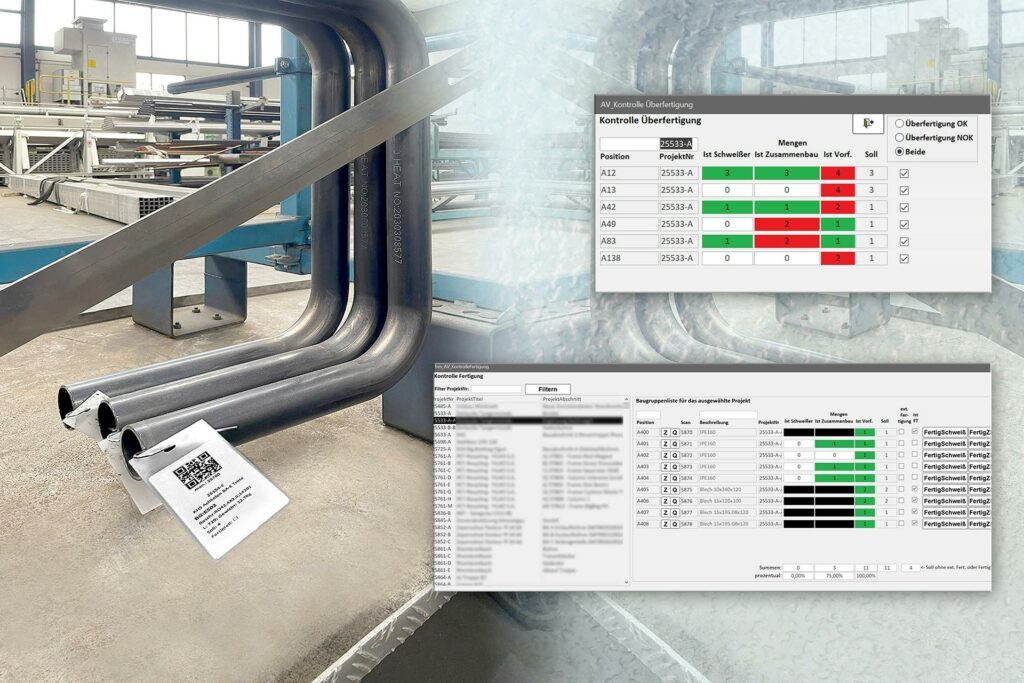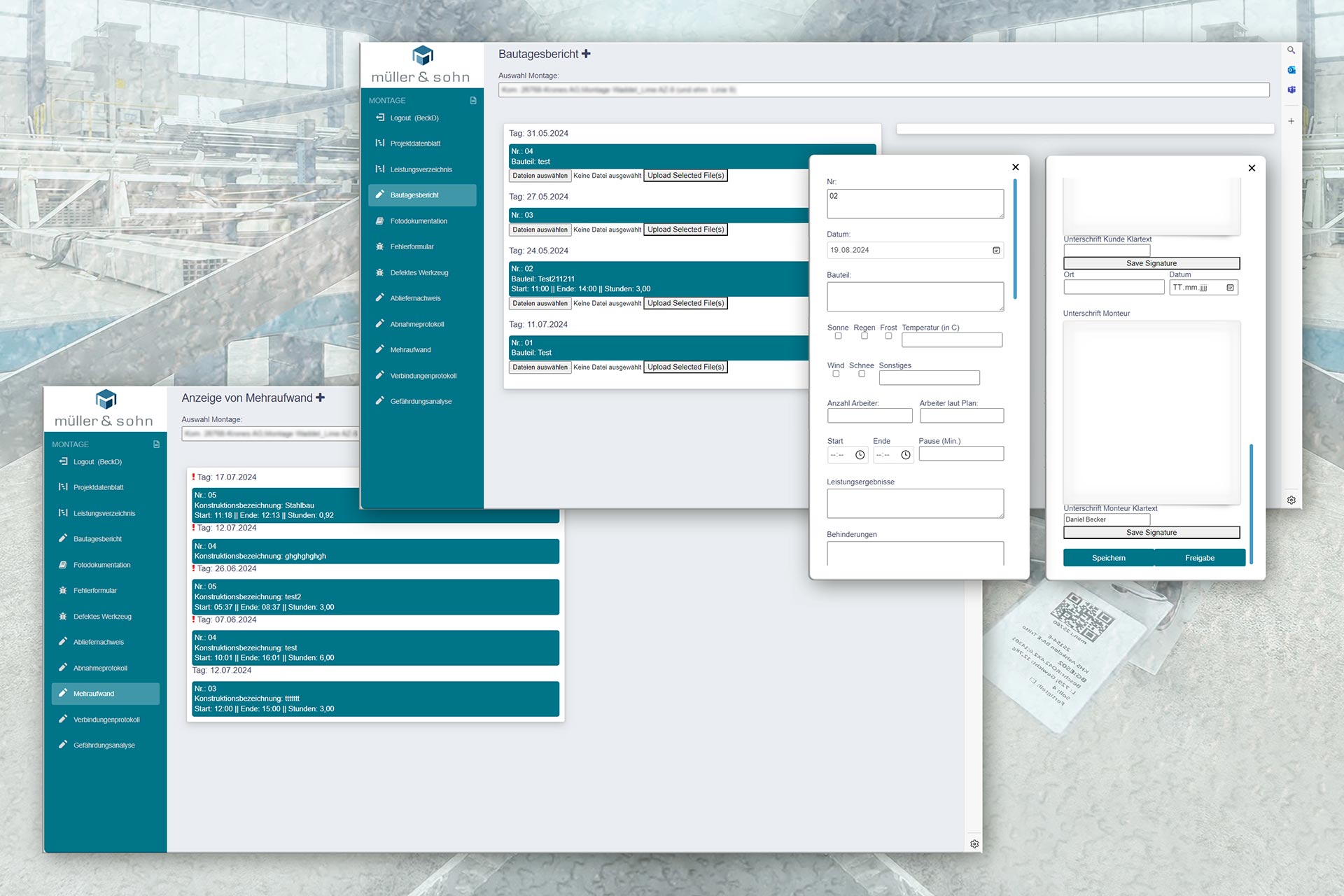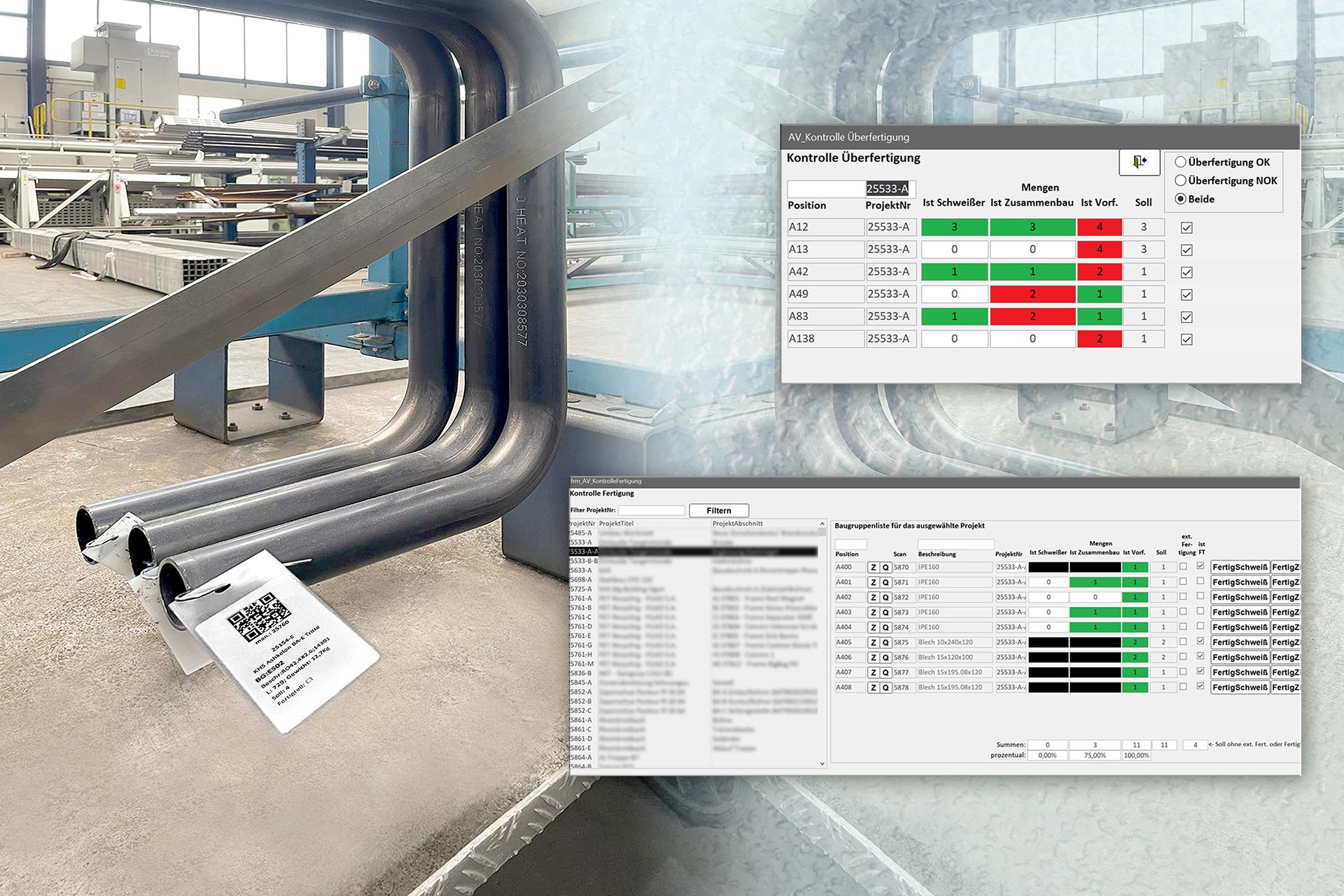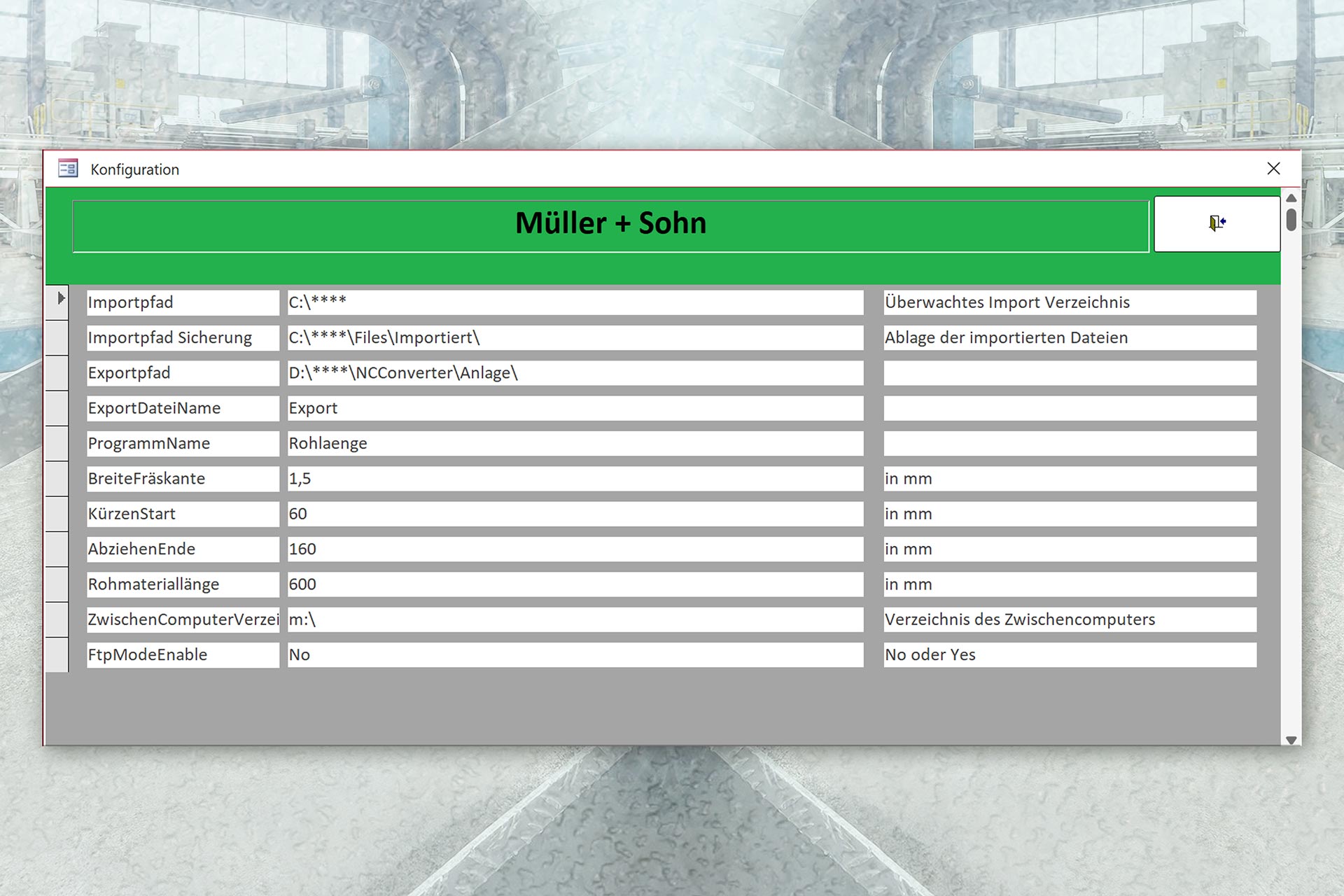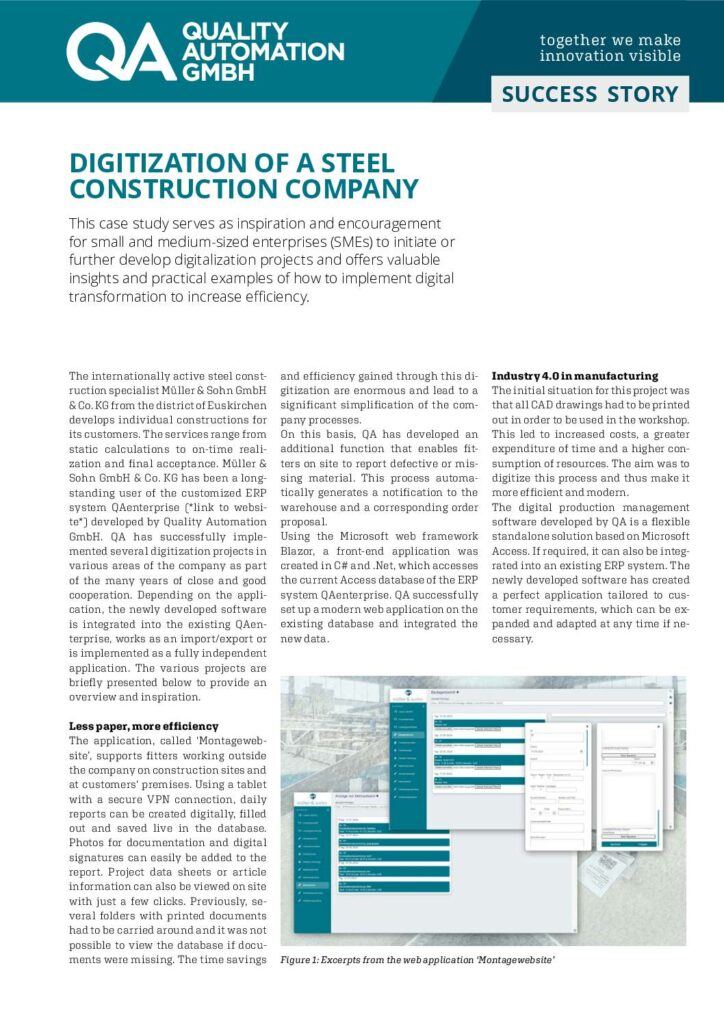The internationally active steel construction specialist Müller & Sohn GmbH & Co. KG from the district of Euskirchen develops individual constructions for its customers. The services range from static calculations to on-time realization and final acceptance. Müller & Sohn GmbH & Co. KG has been a long-standing user of the customized ERP system QAenterprise developed by Quality Automation GmbH. QA has successfully implemented several digitization projects in various areas of the company as part of the many years of close and good cooperation. Depending on the application, the newly developed software is integrated into the existing QAenterprise, works as an import/export or is implemented as a fully independent application. The various projects are briefly presented below to provide an overview and inspiration.
Less paper, more efficiency
The application, called ‘Montagewebsite’, supports fitters working outside the company on construction sites and at customers’ premises. Using a tablet with a secure VPN connection, daily reports can be created digitally, filled out and saved live in the database. Photos for documentation and digital signatures can easily be added to the report. Project data sheets or article information can also be viewed on site with just a few clicks. Previously, several folders with printed documents had to be carried around and it was not possible to view the database if documents were missing. The time savings and efficiency gained through this digitization are enormous and lead to a significant simplification of the company processes.
On this basis, QA has developed an additional function that enables fitters on site to report defective or missing material. This process automatically generates a notification to the warehouse and a corresponding order proposal.
Using the Microsoft web framework Blazor, a front-end application was created in C# and .Net, which accesses the current Access database of the ERP system QAenterprise. QA successfully set up a modern web application on the existing database and integrated the new data.
Industry 4.0 in manufacturing
The initial situation for this project was that all CAD drawings had to be printed out in order to be used in the workshop. This led to increased costs, a greater expenditure of time and a higher consumption of resources. The aim was to digitize this process and thus make it more efficient and modern.
The digital production management software developed by QA is a flexible standalone solution based on Microsoft Access. If required, it can also be integrated into an existing ERP system. The newly developed software has created a perfect application tailored to customer requirements, which can be expanded and adapted at any time if necessary.
With the new production management software, a QR code is generated at the start of the work process, printed out and attached to the respective component. In the workshop, this QR code can be scanned with a hand scanner at the workstation and a CAD drawing appears on the corresponding workstation monitor. Once the work step has been successfully completed, the worker confirms this in the software and the component can move on to the next production step. In this way, the production status of each component can be tracked and recorded live across the various process steps. The new software includes a system control with user and rights management. A large selection of statistics on assemblies, projects and any product properties can be displayed and analyzed over a desired period of time in order to continuously optimize production. Every night, a report is automatically stored on the in-house server for documentation purposes. The report is regularly checked by quality management.
The NC-Converter
This Microsoft Access-based software reduces the waste of a saw-drill line. The NC files created in the design department are no longer loaded directly into the system’s control unit, but are collected in a file directory and nested and terminated using the converter developed by QA. After conversion, CSV files are created which are processed by the saw’s PLC. Mathematical calculations are used to feed summarized CAD data to the saw, resulting in considerably less waste and less material wear than if the files were processed individually by the system control. The converter nests in such a way that the least amount of waste is produced by checking in all components for a construction section whether further lower parts can be placed on the raw material length. The waste caused by cutting edges and the edging area of the system is also taken into account.
Bild 3: Configuration of the data for the control of the saw-drill line
Automation in ordering
At Müller & Sohn, part of the purchasing and material orders are processed via an external ordering platform. In order to significantly increase efficiency in the ordering process, QA implemented the following measures to automate the processes: Using an interface, the C# application developed by QA automatically creates projects and cost centers from the ERP system QAenterprise on the external ordering platform. A CSV file is used as the interface. Hourly synchronization ensures that the current project and cost centre list is compared and updated between QAenterprise and the ordering platform.
Once an order has been triggered by Müller & Sohn, the ordering platform generates an XML file that is stored on the in-house FTP server. This file is automatically imported by the new application and the initiated order is created in QAenterprise so that it can be used for project statistics and incoming and outgoing invoices.
QA has also fully automated an e-mail inbox, which is used to handle part of the ordering process. For example, tool certificates or order confirmations are received as PDFs, which are then automatically saved in the internal server’s file system. From there, the data is automatically imported into QAenterprise and assigned to an order or project.
Further automation in the ordering system is currently still in the development phase. A “material list” for Excel is generated from drawings in the design department. This list contains all items required for internal manufacturing and production. QA is now using C# to develop an automated process that imports the Excel list into QAenterprise and automatically creates the associated purchase orders. The import process consists of reading the file and recognizing and processing the contents. In addition to considerable time savings, this also results in fewer errors. For example, the system checks whether an item is a stock item and whether it is still available in sufficient quantities in the warehouse. In the case of an internal stock item, no purchase order is created, but a stock issue is posted with allocation to the project. For certain items that are marked accordingly in the master data, a notification is generated for the purchasing department, as manual price inquiries have to be made with various suppliers beforehand. Scaled prices from the respective suppliers are also taken into account across projects and orders so that cheaper collective orders can be used instead of individual orders. These graduated prices are stored in a configuration in the database.
Interface to the time recording system
In another project, an interface to an external time recording system with a time clock is currently being developed. The program, which is being implemented in C#, exports projects and cost centers to the Firebird database of the external time recording system and imports the recorded times into the QAenterprise database. After the automatic import into QAenterprise, employees’ times booked on the time clock can be viewed in the time recording system and overtime, for example, can be managed. Import and export run automatically at predefined times of day and can also be started manually if required. QA has already implemented a number of interfaces to various systems in the past and has extensive know-how in this area.
The implementation ensures simple and fast operation by the employee at the time clocks of the time recording system, while the recorded and collected information, combined with other data from the ERP system, can be analyzed and displayed graphically according to customer requirements.
